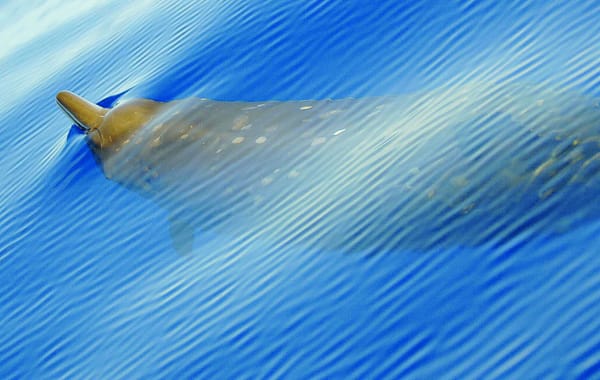Forgotten oceans
Ocean acidifcation tests the limits of our seas, bringing them to an irreversible breaking point

Did anyone else have one of those plastic Helix rulers that said ‘shatterproof’ on them back in school? I always saw that as a challenge.
You could bend those rulers a surprising distance, nearly a hairpin, and they’d spring back into their original shape. Go just a little far though, and they’d snap clean.
Our planet’s oceans, like a shatterproof ruler, can take a surprising amount of abuse. Since the Industrial Revolution, humans have been pumping out carbon dioxide into the atmosphere at ever-increasing rates. However, not all of that carbon dioxide remains in the atmosphere. Roughly 28 percent is taken up by plants during photosynthesis and a further 26 percent is absorbed by the oceans. 2010 data estimates that 33.4 billion tonnes was released from burning fossil fuels and cement manufacture; a further 3.3 billion tonnes was released due to land use change, such as deforestation. Nine billion tonnes of that ends up in the ocean.
Our planet’s oceans, like a shatterproof ruler, can take a surprising amount of abuse
Carbon dioxide dissolves in water forming weak carbonic acid. For 300 million years our oceans have maintained a pH of 8.2 making them slightly basic. Since the 1800s, that pH has dropped to an average of 8.1 – it’s not an especially dramatic change in 200 years. That’s because the ocean functions as a giant chemical buffer.
Chemical buffers are able to resist pH changes. Add a bit of acid or base to a buffer solution and it will be neutralised. In the ocean, various carbonate compounds help to neutralise the carbonic acid formed by dissolving carbon dioxide. Ocean chemistry is complex and not fully understood, but what is clear is that this buffer system is looking strained.
Like a shatterproof ruler, there is a point of no return: a point where the ocean can no longer neutralise all of this excess carbon dioxide.
In other words, we’re living on borrowed time. We’ve been spared the worst impacts of climate change by the great ocean buffer.
So why is ocean acidification a problem? Many invertebrates build their exoskeletons out of calcium carbonate. This is the same chemical found in limestone, and it’s vulnerable to acid erosion. You can see the effects of acid rain on limestone buildings throughout the world, or you can experiment by dropping some vinegar on marble chips.
A 2012 study in Nature found that pteropods, or sea butterflies, in the Southern Ocean had extensive damage to their shells from acid erosion. This is a trend that is likely to continue, and the impacts on marine ecosystems could be devastating. Coral reefs are often considered the ocean’s nurseries; a fertile breeding ground for many species of fish that in turn sustains human communities.
Corals, like pteropods, build their exoskeletons from calcium carbonate. Ocean acidification runs the risk of not only dissolving existing corals, but also makes it harder for them to recover by limiting the amount of calcium carbonate that can be precipitated. Weaker corals are more vulnerable to tropical storms and cannot sustain the same volume of life that we come to expect from them.
At its current rate, ocean acidity is predicted to increase by a factor of five by the year 2100 to concentrations capable of dissolving sea creatures’ shells in just 45 days. Marine farmers of lobster and other invertebrates are rightly concerned about this. Already, the oyster industry in the Pacific Northwest has struggled with high rates of oyster mortality due to ocean acidification. A 2013 study published in Geophysical Research Letters found that it is becoming too energetically expensive for organisms to build shells and growth rates were slowing.
The cold, polar seas are especially vulnerable because cold water is able to store more dissolved carbon dioxide. Oceans absorb, but they also emit carbon dioxide. Up until now, the effect has been net absorption.
However, the problem is not limited to ocean acidification. With warming seas, the fear is that carbon dioxide-saturated oceans will be forced to give up vast quantities of their stored gas. If cold polar seawater is saturated with carbon dioxide, as that water warms some of that gas will no longer remain storage. Mass emissions of carbon dioxide from the oceans itself has the potential to cause accelerated climate change at rates we have not yet experienced.
As with ocean acidification, we have been spared the worst of the effects so far. This is because the oceans are not just a chemical buffer. They are also resistant to temperature change. While atmospheric temperatures have increased by about 0.6°C over the past century, in the oceans this change has only been about 0.1°C. This is because water has what we call a high specific heat capacity – it functions as a storage heater, storing heat for long periods of time.
Like the ruler, there’s a limit. As a species, are we really willing to find out where that limit is? Last week, a study published in Science found that much attention had been paid to the effects of climate change on land and in the atmosphere, but little on the ocean. We’re beginning to understand the economic and ecological impacts of climate change in the oceans, but a co-ordinated response from world governments has been limited.
They’ve been taking up the strain for a long time. Now the oceans are beginning to tire.









